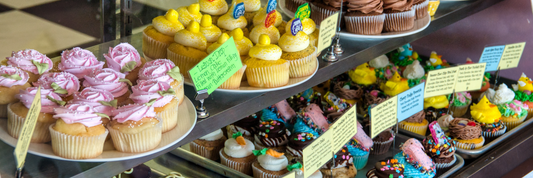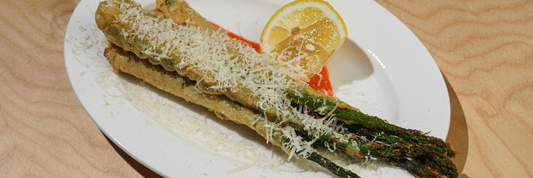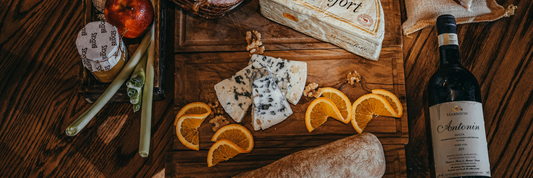Glass bottles are a staple in packaging, offering durability, reusability, and a classic look that appeals across industries. From storing beverages to holding cosmetics and medications, glass bottles are versatile and eco-friendly. Crafting these bottles involves precise techniques and high temperatures, transforming raw materials into a sturdy, reusable product. This article will walk you through the materials needed and how to make glass bottles step by step guide.
- Exploring the Different Types of Glass Bottles and Their Uses
- The Fascinating History of Glass Bottles: From Ancient Times to Today
- Glass vs. Plastic Bottles: What’s Better For Juice?
The Foundation: Understanding Glass and Its Properties
What is Glass? A Non-Crystalline Solid
Glass is a fascinating material that, despite being clear and seemingly simple, is complex in its composition. It is classified as a non-crystalline or amorphous solid, meaning that its atomic structure is not organized in a long-range order like crystals. Instead, glass features a random arrangement of atoms that gives it unique properties such as transparency, durability, and low thermal conductivity. This amorphous nature allows glass to be molded and shaped when heated, making it ideal for various applications, including the creation of bottles.
Key Ingredients: The Role of Silica Sand
The primary ingredient in glass-making is silica sand, which forms the foundation of the glass matrix. Silica, or silicon dioxide (SiO2), is abundant in nature, primarily found in quartz. In the glass-making process, silica provides the basic structure to which other ingredients are added. It is essential for the glass to possess the desired strength and durability. The quality of silica can significantly affect the final product, making it crucial to select the right type and grade of sand for glass production.

Other Essential Components: Soda Ash and Limestone
In addition to silica, other components such as soda ash and limestone play vital roles in glass production. Soda ash (sodium carbonate) acts as a flux, reducing the melting point of silica and making it easier to work with. This lower melting point is important for energy efficiency in glass manufacturing.
Limestone (calcium carbonate) adds stability to the glass structure and improves its chemical durability. Together, these ingredients create a balanced mixture that forms the base for various glass types used in bottle production.
The Science of Melting: Transforming Raw Materials
The process of transforming these raw materials into glass involves intense heat. The raw materials are mixed and heated in a furnace at temperatures ranging from 1,400 to 1,600 degrees Celsius. This high-temperature environment causes the silica to melt and flow, allowing the other components to blend into a uniform liquid known as molten glass. Understanding this melting process is crucial as it sets the stage for shaping the glass into various forms, including bottles.
Glass Bottles vs. Aluminum Cans: A Detailed Comparison for Packaging

Methods of Making Glass Bottles: From Ancient to Modern
The Core Process: Heating and Shaping Molten Glass
Creating a glass bottle begins with heating and shaping molten glass. Once the raw materials have melted into glass, the next step is to shape it into the desired form. This can be achieved through various techniques that have evolved over centuries, each with its own unique qualities and applications.
Ancient Techniques: The Art of Free-Blown Glass
One of the oldest techniques for making glass bottles is the free-blowing method, which dates back to ancient civilizations. This method involves using a blowpipe to gather molten glass from the furnace, then blowing air into the pipe to form a bubble. The artisan can then shape the bubble into a bottle by manipulating it with tools and their breath. This technique allows for the creation of beautifully crafted, one-of-a-kind pieces but is limited in terms of mass production.
The Invention of the Mold: Revolutionizing Bottle Production
The advent of mold-blowing technology marked a significant turning point in glass bottle production. With molds made from metal, manufacturers could create standardized shapes more efficiently. Unlike free-blown glass, which relies on skilled artisans, mold-blowing allowed for greater consistency and speed in production. This innovation paved the way for the mass production of bottles, making them more accessible to the general public.
Modern Industrial Methods: Automated Bottle Manufacturing
Today, glass bottle manufacturing has transformed into a highly automated process. Modern methods leverage advanced machinery to produce thousands of bottles per hour with remarkable precision. These industrial techniques not only enhance production efficiency but also improve the quality of the final product. Automation has made it possible to create glass bottles in various shapes and sizes, catering to diverse consumer needs.
The Industrial Process: Mass Production of Glass Bottles

Step 1: Batching and Mixing Raw Materials
The first step in the industrial process of making glass bottles is batching, which involves carefully measuring and mixing raw materials. Accurate proportions are essential to ensure the right chemical balance and desired glass properties. This mixture is then transported to the furnace for melting.
Step 2: Melting the Batch in a High-Temperature Furnace
Once mixed, the batch is loaded into a high-temperature furnace where it is heated to the melting point. This stage requires careful monitoring of temperature and time to achieve a uniform, molten glass consistency. Maintaining the right conditions ensures that all ingredients integrate properly, affecting the glass's strength and clarity.
Step 3: Forming the Bottle: Different Techniques
The forming stage is where the molten glass takes shape. This process can involve several methods:
Blow and Blow Method
In the blow and blow method, a parison (an early form of the bottle) is created using a hollow blowpipe, followed by a second blowing step to expand and shape the glass inside a mold. This technique is often used for producing bottles with narrow openings.
Press and Blow Method
The press and blow method combines two forming techniques: pressing the glass into a mold to create the bottom half and then blowing to form the upper section. This method is ideal for producing bottles with complex shapes and features.
Step 4: Annealing: Strengthening the Glass
Why Annealing is Crucial
After forming, the glass bottles need to be gradually cooled in a process known as annealing. This step is crucial because it relieves internal stresses induced during the forming process. Without proper annealing, glass can become brittle and susceptible to breakage.
The Controlled Cooling Process
The annealing process takes place in a lehr, where bottles are passed through a controlled temperature environment. The cooling rate is carefully controlled to allow uniform temperature distribution, ensuring the glass maintains its strength and clarity.
Step 5: Quality Control and Inspection
Quality control is a fundamental aspect of glass bottle production. Bottles are subjected to rigorous inspections to ensure they meet industry standards for clarity, strength, and uniformity. Automated systems often use cameras and sensors to detect defects, allowing for quick identification and resolution of issues.
Step 6: Packaging and Distribution
Once quality checks are complete, the bottles are packaged for distribution. Automated packaging systems carefully arrange and box the bottles, ready to be shipped to clients and retailers. Proper packaging prevents damage during transport, ensuring that consumers receive quality products.

eguard medications from light and contamination, ensuring the longevity of the product.
Types of Glass Used
When discussing glass bottles, the type of glass utilized can significantly influence the bottle's properties and performance.
Soda-Lime Glass (Most Common)
Soda-lime glass is the most widely used type of glass for bottles. It consists primarily of silica, soda, and lime, making it both affordable and versatile. This type of glass is conducive to mass production, allowing manufacturers to create a variety of bottle shapes and sizes.
Borosilicate Glass (Heat-Resistant)
Borosilicate glass offers superior resistance to thermal shock, making it an ideal choice for laboratory and kitchen applications. Its durability allows it to withstand temperature changes without breaking, which is essential for certain beverages and chemical experiments.
Amber Glass (UV Protection)
Amber glass is specifically designed to protect contents from harmful UV rays. It’s commonly used for light-sensitive products, such as certain pharmaceuticals and oils, ensuring that the quality and potency of the contents are preserved.
Unique Designs and Customization
Glass bottles also stand out for their unique designs and the ability for customization, which can create a strong brand identity.
Embossing and Engraving
Embossing and engraving allow companies to add a tactile element to their bottles, making them more memorable and appealing. These techniques not only enhance branding but also provide a sense of authenticity and craftsmanship.
Colored Glass Production
Colored glass production offers brands the ability to create visually striking bottles that differentiate their products in a crowded market. Different colored glass not only enhances aesthetics but can also serve functional purposes, such as protecting contents from light.
The Importance of Recycling Glass Bottles

Recycling glass bottles is crucial for environmental sustainability, offering numerous benefits that support ecological balance.
Environmental Benefits of Glass Recycling
Recycling glass significantly reduces energy consumption compared to producing new glass from raw materials. It also conserves natural resources, minimizes landfill waste, and lowers greenhouse gas emissions—making it a vital practice for a sustainable future.
The Glass Recycling Process
The glass recycling process typically involves collecting, cleaning, and crushing used glass into cullet, which is then melted down and formed into new bottles. This closed loop reduces the need for raw materials and lowers the overall environmental footprint of bottle production.
Glass as a Highly Recyclable Material
Glass is 100% recyclable and can be recycled indefinitely without losing quality or purity. This remarkable characteristic makes glass bottles one of the most sustainable packaging options available.
Custom vs. Standard Glass Bottles: Which is Right for Your Brand?

DIY Glass Bottle Making (Small Scale)
While making glass bottles at home presents challenges, small-scale projects can be rewarding and educational.
Can You Make a Glass Bottle at Home? (Limitations)
Creating a glass bottle at home is not straightforward due to the high temperatures required for glassblowing and shaping. Specialized equipment, such as a furnace and blowpipe, is necessary, making it largely impractical for hobbyists without professional tools.
Working with Recycled Glass: Slumping and Fusing
One alternative for those interested in DIY glass projects is slumping and fusing. These techniques involve melting glass pieces in a kiln to create new shapes and can be a creative way to repurpose discarded glass. However, safety measures and appropriate equipment are essential for handling hot glass.
Safety Precautions for DIY Glass Projects
When working with glass, safety should be a priority. Key precautions include:
- Wearing protective eyewear and gloves
- Working in a well-ventilated area
- Understanding the kiln operation and temperature control
Conclusion
As we explore the various types and features of glass bottles, it’s clear that this craft is not only an industrial necessity but also an artistic expression. Whether it's in mass production or small-scale DIY projects, the world of glass bottle making continues to evolve while retaining its timeless appeal.




